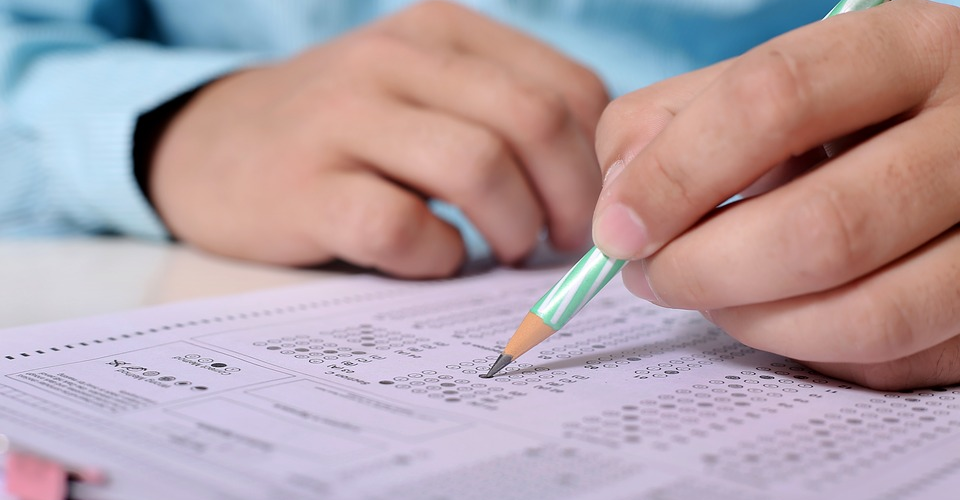How many questions are in the Part 107 pool?
For aspiring commercial drone pilots, there is no bigger thing looming in the horizon but the Part 107 knowledge test. Passing this test is the major hurdle to earning the much-coveted Part 107 drone license which legally allows drone pilots to earn cash while flying their drones. The format of the knowledge test is quite simple – it’s a 60-item, multiple choice test. With so many sample questions available online, passing it should be quite simple, right?
Not exactly, because the FAA has smartly maintained a “pool” of questions for the knowledge test. What’s the big deal about this pool and how many questions are there, really? What’s the best way to prepare for the knowledge test’s variety of questions?

PART 107 Made Easy
- 161 Question and Answer Study Guide
- 105 pages of illustrated content
- Covers all parts of the Part 107 test
- $97 of value for free
What is this “pool” referring to?
As we’ve mentioned, the knowledge test has 60 multiple choice items. To pass the test, you need to correctly answer at least 60% of these questions. However, of the hundreds of thousands of people who have already taken the Part 107 knowledge test, how is it possible that the questions have not leaked out yet?
The answer is – some of the questions have already probably leaked out. The thing is, knowing these questions might not necessarily help you when it’s your turn to take the test. The 60 questions that come up in anyone’s knowledge test are randomly chosen from a much larger pool. This means that every person who takes the Part 107 knowledge test probably takes a different version of it.
How many questions are in the pool?
The 60 questions that a testee receives are randomly picked from a pool of about 400 questions. It’s also reasonable to assume that the FAA updates this pool of questions periodically, so there may be even more variations over its three years of implementation.
How does the huge pool of questions affect you if you’re planning to take the test? This only means that you can answer as many sample questions as you can, but you are still likely going to find a question in the actual test that you haven’t encountered yet.
How many possible combinations of 60 items can be made from a pool of 400? Several orders of magnitude higher than billions, that’s for sure. The random nature by which questions are picked also means that the probability of two tests being identical is so low it can be considered impossible.
Tips on preparing for the knowledge test
The intention of this test design is clear: you need to be ready for any and all types of questions. The FAA is also avoiding the possibility of testees being able to answer certain questions just because they have read about the questions elsewhere. Knowing this, how can an aspiring licensed pilot prepare for the knowledge test?
1. Know which topics to prioritize
Although the questions of the Part 107 knowledge test are picked at random, the FAA has released a rough estimate of how the questions will be distributed according to the topic. A majority of the exam (around 45%) will involve drone operations – practical stuff such as how drones fly, or how you can control them. The next biggest test topic (30% to 45%) will cover the Part 107 regulations and rules on controlled and restricted airspace. Lastly, the balance will be covered by weather and drone loading and performance.
Based on this distribution, you can divide the time and effort you will spend on each test topic. Since none of them are common knowledge, we suggest spending time reading up on all of them, even those that you feel are practical. Don’t neglect minor topics such as weather and drone loading, as the 5 to 10 questions on them can make the difference between you passing or failing the test.
2. Familiarize yourself with the references
During the knowledge test, you will be given a copy of the Airman Knowledge Testing Supplement Book. This will serve as your reference for sectional charts and map legends. It plays a very important role, so make sure that the test will not be the first time that you will be opening this book. A lot of the questions will have you leafing through the pages and it will be very beneficial if you already know what you are looking for. By familiarizing yourself with the book while you are studying, you can be better prepared for whatever the test will throw at you.
3. Don’t cram!
We cannot stress this enough. The best way to prepare for the unpredictability of the Part 107 knowledge test is to just hunker down and spend some time studying. Most people who have taken the test recommend spending at least 20 hours of dedicated study time to be sufficiently prepared. The Part 107 knowledge test simply isn’t something you can cram for and expect to get good results from.
Fortunately, aspiring commercial drone pilots are so spoiled with resources to prepare for the exam. You have a lot of options – free study guides, hundreds of sample questions, free instructional videos, and podcasts of successful pilots offering their advice and experience on how their tests went. If you have the budget, then why not sign up in any of the high-quality paid training courses? Not only will these courses help you pass the knowledge test, but their resources will remain available to you even as you launch your career as a commercial drone pilot.
Final thoughts
The decision of the FAA to design the Part 107 knowledge test with a high degree of uncertainty and randomness makes it a little more reliable as a gauge of a drone pilot’s level of knowledge. By throwing questions at them that they have not encountered, they are forced to stay sharp and think on their feet. After all, the quality of being well-prepared is also quite important if you want to be a reliable commercial drone pilot. Don’t worry too much about it – it’s nothing that a little hard work can’t solve.


